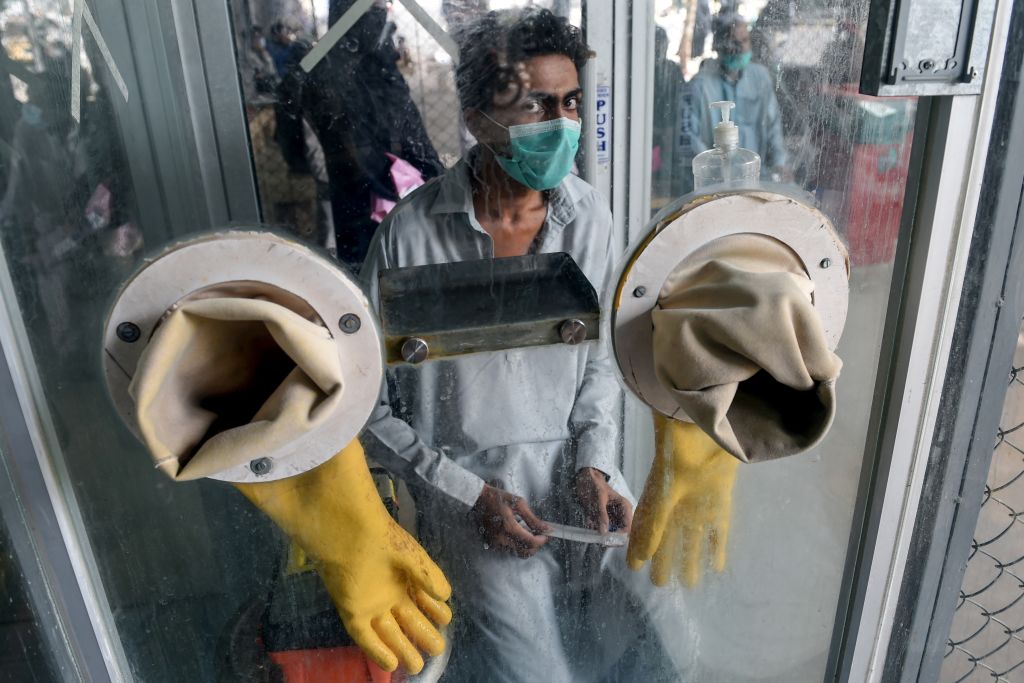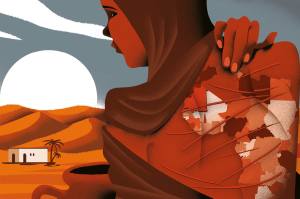As the COVID-19 pandemic rages on, Pakistan is emerging as an unheralded, and unlikely, success story. Despite having the fifth highest population in the world, Pakistan’s cumulative COVID-19 cases at 281,136, and 6,014 total deaths. rank the country 14th and 19th in the world. However, most remarkable of all is Pakistan’s progress over the last month, which has seen it rebound from the brink of disaster.
Last week, Pakistan’s recorded daily COVID-19 cases returned to the three-figure mark — the lowest since May. On Tuesday, Pakistan reported 432 new cases and 15 deaths, signifying a 10-fold decrease in both stats within a span of two months.
This is a remarkable turnaround given the predictions of the awful toll the virus might have. An Imperial College London study in June indicated Pakistan could hit 13.6 million infections by August 4 and 80,000 deaths by August 10, if it failed to fully lockdown. In mid-June, government ministers warned that cases of COVID-19 could hit 1.2 million by the end of July. Pakistan’s actual numbers are a fifth of the government’s projection. So what’s going on?
As soon as the official daily infections started decreasing in July, the Pakistani government was quick to congratulate itself. The United Nations has also lauded Pakistan’s declining numbers. While the Wall Street Journal’s report last weekend, describing Pakistan as a coronavirus ‘bright spot, is being quoted extensively in the local media — both English and Urdu — as global approbation for Pakistan.
The staggering plunge in Pakistan’s COVID cases has puzzled one and all, including health experts, policymakers and Prime Minister Imran Khan himself. Reasons ranging from the local population’s exposure to a wide array of vaccines, to torrential monsoon rains, higher density of youth, and anonymous immunity, have been cited as possible, albeit uncorroborated, explanations. Genetic and environmental factors have also been discussed as potential reasons for low death rates across South Asia from the onset of the pandemic.
With 1,480, 1,383, and 1,271 COVID cases per million, as things stand, Bangladesh, India, and Pakistan, are respectively ranked 90, 91 and 97 in the world — roughly mid-table. Similarly, with 29, 27 and 20, deaths per million, India, Pakistan are Bangladesh, are respectively placed at 93, 98 and 103 — despite India’s precipitously rising cases, which saw the country register the world’s highest death toll on Monday. Nepal and Sri Lanka are currently ranked 171 and 180 in the world in deaths per million.
But as well as apparently respectable figures, what also binds South Asian states is lack of transparency, which has been cited as a potential explanation for the stats in the region. Could this explain what is happening in Pakistan?
In addition to a clear dip in the daily COVID-19 tests, doctors across Pakistan have claimed that they have been coerced into reporting low numbers. Some doctors are switching the cause of death in compliance with requests of family members, who either want to save themselves the embarrassment, or ensure that they receive the dead bodies and organize proper funerals, which carry immense significance in South Asian Muslim culture.
Three doctors and a health official from Islamabad, Karachi and Lahore, who I approached for this piece, claim that actual COVID numbers have been significantly higher from the outset. They also suggest that in many poorer, rural areas, it has been common for locals to ward off any health official tasked with COVID-19 sampling.
Some in Pakistan — which remains one of only two countries in the world where polio still exists, largely owing to conspiracy theories surrounding the vaccine — have been resistant to COVID-19 tests and treatment citing it a western plot ‘to make Muslims infertile’. Indeed, the wide gamut of COVID conspiracy theories — which include (predictably) blaming Jews and Ahmadis — have both been a hindrance in Pakistan’s fight against the pandemic, and contributed to the country’s skewed data.
Where the Wall Street Journal argued that the conservative nature of Pakistan might have helped its COVID-19 battle, since the country has ‘no bars and nightclubs’ for the locals to crowd, the piece failed to take into account the Islamist factors actually exacerbating the crisis by mandating gatherings of a different kind.
Imran Khan continues to take pride in Pakistan being the only Muslim country that did not shut down its mosques at any time during the pandemic. Similarly, the COVID threat has failed to stop mass rallies condemning alleged blasphemy.
Over the past five months, the government’s instructions on COVID-19 have been confused and often self-contradictory. And yet, what cannot be denied is that in recent weeks, Pakistan has taken incredible strides in lowering its COVID-19 numbers. These figures are, at least, backed up by the increasing number of hospitals which are emptying out.
With the Islamic holy festival of Eid-ul-Azha celebrated over the weekend, the numbers registered over the next 10 days will be critical in substantiating Pakistan’s triumph in the fight against coronavirus, in turn reaffirming the government’s bid to reopen more sectors of the economy.
Should Pakistan sustain its progress in the next couple of months, it will be a major turnaround, and feat for Imran Khan’s government — even if they might have had very little to do with it.
This article was originally published on The Spectator’s UK website.


















